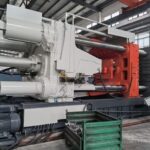What Is Clear Anodized Aluminum?
Clear anodized aluminum is standard aluminum that has been anodized to form a transparent protective oxide layer. Unlike paint or plating, this layer is grown from the base metal itself, so it’s thin, hard, and very well-adhered. Because the oxide is optically transparent and microscopically porous before sealing, dyes can be added for colors—but when you skip dyes and use a clear seal, you get a clear anodized finish (sometimes called natural anodized).
Key traits of a clear anodic finish
- Metallic silver/gray appearance that can range to light champagne depending on alloy, prep, and sealing.
- Harder and more wear-resistant than bare aluminum (anodized aluminum finish is typically 2–3× harder at the surface).
- Great corrosion resistance, especially with proper sealing.
- Electrically insulating at the surface; thermally stable at typical service temps.
- Environmentally friendly vs. many paints (no solvent off-gassing during service).
How Clear Anodizing Works
- Clean & etch – Oils/oxides removed; optional alkaline etch or acid bright dip to set the surface texture (matte vs. bright).
- Anodize – Parts become the anode in a controlled acid bath. A DC current grows an ordered aluminum-oxide layer from the metal outward. Thickness is controlled by current density, time, temperature, and chemistry (e.g., sulfuric acid for Type II).
- Rinse & dye (optional) – For clear anodized parts, no dye is added.
- Seal – Hydrate/convert pore structure (hot DI water, nickel acetate, or mid-temp seals) to lock in corrosion resistance and stabilize clear anodized color.
Common standards you’ll see in specs:
- MIL-A-8625F / MIL-PRF-8625, Type II (clear or dyed, sulfuric acid)
- AA Aluminum Finishing Designations (e.g., AA-M12C22A41 for architectural clear anodize)
Clear Anodized Aluminum Finish — Specifications & Thickness
Typical engineering expectations for a clear anodized aluminum finish (Type II):
| Property / Spec item | Typical range / notes |
|---|---|
| Coating thickness | 5–25 µm (≈ 0.2–1.0 mil). Architectural storefront frames often 10–18 µm; consumer enclosures 8–15 µm. |
| Surface hardness | ~300–600 HV (microhardness of anodic layer; base alloy still dictates bulk strength). |
| Corrosion resistance | 300–1,000+ hours neutral salt spray after proper sealing (varies with alloy, prep, and seal). |
| Adhesion | Integral to substrate (grown in place). No flaking like paint. |
| Electrical | Surface is dielectric/insulating; breakdown depends on thickness/seal. |
| Thermal | Excellent heat tolerance for most ambient/industrial use; oxide stable far above paint limits. |
How thick is a clear anodized finish? For most industrial parts, 8–15 µm is common. Heavy-duty architectural systems often call for 12–20 µm to boost weathering durability.
Clear Anodized Color vs. Mill Finish or Brushed
Even though we call it clear, color is not pure “water-clear.” Expect silver to champagne tones. Three things control the look:
- Alloy chemistry – 6063 (extrusions) tends to yield a clean, consistent clear anodized aluminum color; 6061 may appear slightly grayer; high-copper or high-silicon alloys can darken.
- Surface prep – Brushed or bead-blasted parts look matte; bright-dipped parts are mirror-like. Etch time affects how “gray” the finish appears.
- Sealing – Hot DI water vs. nickel-acetate seals can shift tone subtly and affect stain resistance.
Color tolerance: If you need multiple batches to match, specify ΔE tolerances, fixed alloy/temper, identical prep & seal, and request retain samples.
Why “Clear Anodized Aluminum Storefront” Is Popular
The phrase clear anodized aluminum storefront (and clear anodized storefront) shows up in many specifications because Type II clear anodize on 6063-T5/T6 extrusions gives:
- UV-stable appearance that doesn’t chalk like paint.
- High abrasion resistance for doors/frames/handles.
- Excellent corrosion resistance—with proper sealing and periodic cleaning—even in urban or coastal environments (may require heavier thickness or special sealer near salt spray).
- Compatibility with glazing gaskets, sealants, and hardware.
Architectural shorthand you’ll see in specs: AA-M12C22A41 (clear, Class I/II thickness as required).
Pros and Cons of a Clear Anodized Finish
Advantages
- Long-lasting metallic look; won’t peel like paint.
- Hard, wear-resistant surface; easy to clean.
- Corrosion resistant when sealed; good for outdoor use.
- Environmentally friendly in service; low VOC.
- Stable under heat/UV; colorfast compared with many coatings.
Limitations
- Not a filler: Anodize follows the base texture—machining marks remain unless prepped.
- Color variation risk across alloys/batches if prep isn’t consistent.
- Electrical insulation may be unwanted for grounding unless masked.
- Repair is harder than paint; damaged anodize often requires strip & re-anodize.
Clear Anodized vs. Painted vs. Powder Coated
| Aspect | Clear Anodized | Powder Coat | Liquid Paint |
|---|---|---|---|
| Look/feel | Metallic, integral oxide, silver-to-champagne | Opaque, broad colors/textures | Opaque, very broad palette |
| Durability | Hard surface, great UV & wear | Very good if pretreated; can chip | Good, but can scratch/chip |
| Corrosion | Excellent when sealed | Excellent with proper pre-treat | Varies with system |
| Repair | Usually re-anodize | Sand & re-coat spot | Touch-up possible |
| Tolerances | Minimal thickness growth (µm) | 50–120 µm film adds thickness | 20–60 µm typical |
| Cost | Efficient at volume | Moderate | Varies; more labor steps |
Use clear anodizing when you want a metallic, durable, UV-stable look with thin, uniform build and strong corrosion protection—ideal for anodized aluminum finishes on frames, housings, heat-sinks, and machined parts.
Maintenance & Cleaning (Keep the Finish Clear)
- Rinse dirt/salts periodically; for storefronts, plan quarterly cleaning in urban/coastal zones.
- Use pH-neutral detergent (no strong alkalis/acids). Soft cloth or non-abrasive sponge.
- Avoid steel wool or harsh scouring pads that can burnish or contaminate the oxide.
- For stains/water spots: mild detergent + warm water; stubborn spots may respond to dilute vinegar, then rinse and dry.
Does anodizing fade or turn black? Properly sealed Type II clear anodize resists UV fade; darkening usually traces to pollution, improper cleaners, or galvanic contamination—tighten maintenance and material compatibility.
Quick Data Ranges (Room-Temperature Reference)
| Item | Typical Range |
|---|---|
| Clear anodic thickness (Type II) | 5–25 µm (0.2–1.0 mil) |
| Surface hardness (HV) | ~300–600 HV |
| Corrosion (NSS, sealed) | >300 h to 1,000 h+ depending on alloy/seal |
| Coefficient of friction (dry) | 0.4–0.7 (texture & seal dependent) |
| Service temp (continuous) | Up to ~150–200 °C without color loss; oxide itself tolerates far higher |
These are practical design ranges; always lock final values with your finisher’s spec sheet.
FAQ — People Also Ask
What is a clear anodized finish?
A transparent anodic oxide finish on aluminum that increases hardness and corrosion resistance while preserving a metallic look.
What is clear anodized aluminum?
Aluminum whose surface has been clear anodized (no dye), producing a silver/gray to light-champagne appearance.
Is clear anodized aluminum color always the same?
No. Alloy, surface preparation (etch/brush/bright-dip), and sealing shift tone. Use consistent processes and set color tolerances.
How thick is clear anodized aluminum?
Commonly 8–15 µm for general products; 12–20 µm for storefront/architectural; specialty parts may use 5–25 µm.
Is clear anodizing better than powder coating?
Neither is “better” universally. Anodizing gives a thin, hard, metallic look with great UV stability; powder offers thicker films and broad colors. Choose by environment, appearance, and repair strategy.
Can you clear anodize a storefront?
Yes—clear anodized aluminum storefront and clear anodized storefront specs are standard in commercial architecture (often 6063 extrusions, Type II, sealed).
Is clear anodized finish the same as clear coat?
No. Clear anodize is grown oxide; clear coat is a paint/polymer layer applied on top.
Specifying Clear Anodized Aluminum in Your RFQ
Copy/paste and edit:
- Base alloy/temper: e.g., 6063-T5 (extrusions) or 6061-T6 (machined parts)
- Process: Clear anodizing (Type II, sulfuric), no dye
- Thickness class: e.g., 10–15 µm (0.4–0.6 mil) [state min & target]
- Surface prep: e.g., Fine brush + light etch or as-machined + etch; note if bright-dip required
- Seal: Hot deionized water or nickel-acetate; state preference
- Color tolerance: Define ΔE vs. master chip; require retain sample
- Critical surfaces & masking: Call out threads, datum faces, mating-surfaces
- Corrosion/HV targets (optional): e.g., ≥500 h NSS sealed; HV ≥350
- Standards: Reference MIL-A-8625F/MIL-PRF-8625 Type II or AA-C22 class, as applicable
If you need a durable metallic look, proven corrosion resistance, UV stability, and tight dimensional control, clear anodized aluminum remains one of the most versatile, cost-effective anodized aluminum finishes for products from storefront systems to consumer electronics and machined parts.

















